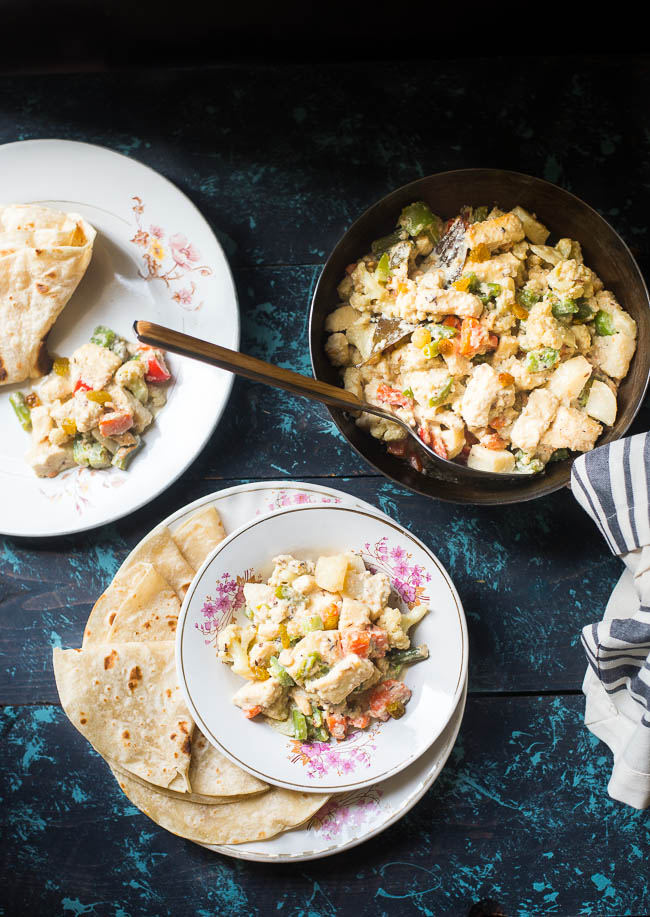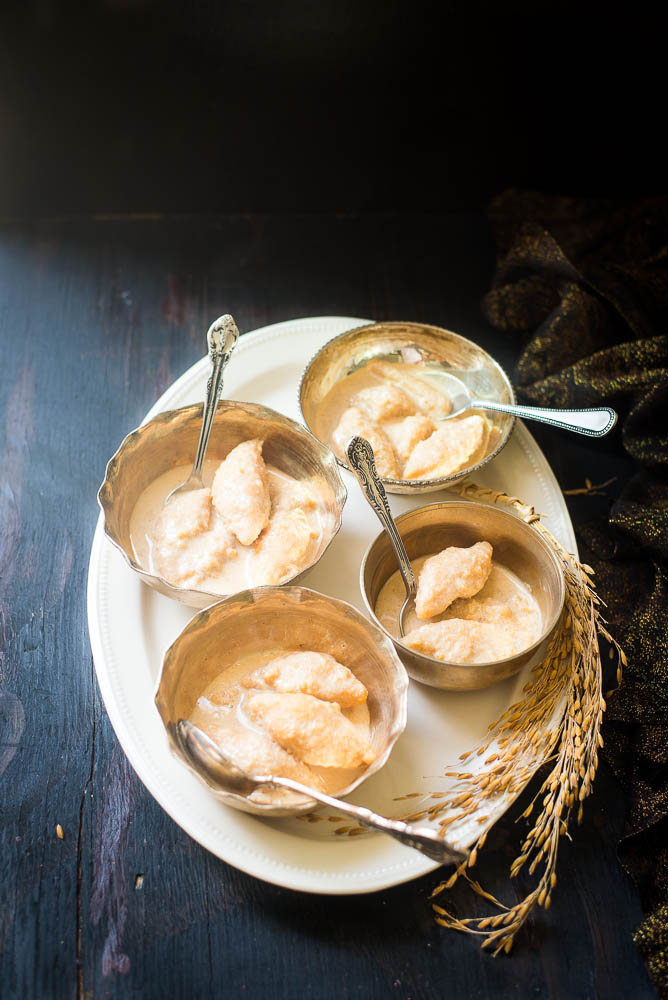After presenting couple of Bengali traditional dessert dishes, let me post something of a different cuisine like a Mughlai Dish. This rich, creamy and flavorful dish is called Navaratan Korma in Hindi, that means nine gems (Nava-Ratan). This name has been coined because nine different vegetables, fruit and nuts are used in this dish. “Korma” is usually made out of meat like goat or beef, but this one is vegetable version of the same. During Mughal era in India in the imperial kitchens, this preparation used to be served to kings, queens and other royals.
This dish is highly nutritious due to presence of a rainbow of fruits and vegetables. You can serve with Fried Rice, hot Naans or Paratha. It's a wonderful vegetable dish with mildly spiced and probably on the little sweeter side, that will satisfy our Indian taste buds. You can add some hot peppers if you don't want to make it mild.
This dish is not for everyday meals. You should make it on special occasions, like when guests come over to your place for lunch or dinner. Making Navaratna Korma is fairly straight forward and mainly has two steps. The first step starts with blanching the vegetables. Blanching is a simple and brief process of boiling. This process helps to retain the color of the vegetables. The second step is making the sauce and simmering the boiled vegetables in the creamy korma sauce.
Ingredients :
Cauliflower florets : 1 cup
Carrot : 2, medium sized,small cubes
Green peas : 1/2 cup
Bell pepper : 1 medium size, seeds removed and cut into 1" squares
French Beans : 10, top and tails removed and chopped
Pineapple cubes ( optional ) : 1 cup
Potato : 1 cup, peeled and cubed
Paneer : 1 cup, cut into small cubes
Cashews :1/2 cup, broken, slightly fried
Raisins : 2 tablespoons
Vegetable oil : 4 tablespoons
Bay leaf : 2
Green Cardamom : 3
Cinnamon stick : 1 inch
Cloves : 3
Green Chili : 2 ( slit lengthwise )
Onion : 1, first boiled, then make a paste
Ginger - Garlic paste : 1 tablespoon
Cashew : 1/2 cup, make a paste
Coriander powder : 1 teaspoon
White pepper : 1 teaspoon
Salt : to taste
Cream : 2 tablespoon
Milk : 1 cup, if needed
Method :
1. Take a pan, add enough water to boil. Add the vegetables except the bell pepper. Add salt and let it cook till they are half cooked. Remove from heat, drain the excess water and keep them aside.
2. Take a non- stick pan, add oil and heat it up. Add the paneer cubes and fry them until the color changes to golden brown on both sides. Take it off from the pan and set it aside.
3.Now add the remaining oil to the pan, add bay leaves, green cardamoms, cinnamon, cloves and green chilies. Once the aroma comes up, add the ginger - garlic paste. Cook it until raw smell goes off. Now add the boiled onion paste, cook it until oil oozes out from the sides of the pan. Now add bell peppers and keep stirring. Add the cashew paste and cook it until oil starts coming up from the sides of the pan.
4. Add coriander powder, again cook the masala for couple of minutes. Add the milk / water and bring it to boil.
5. Add boiled vegetables, fried Paneer, slightly fried cashew, raisins, pineapple. Add cream, salt and white pepper. Lower the flame and simmer it for 10 minutes. Check the desired consistency, check seasoning and switch off the gas. Serve hot with naan , paratha or pulao.





















